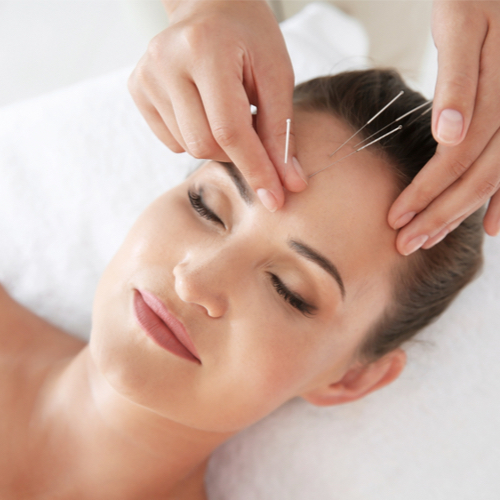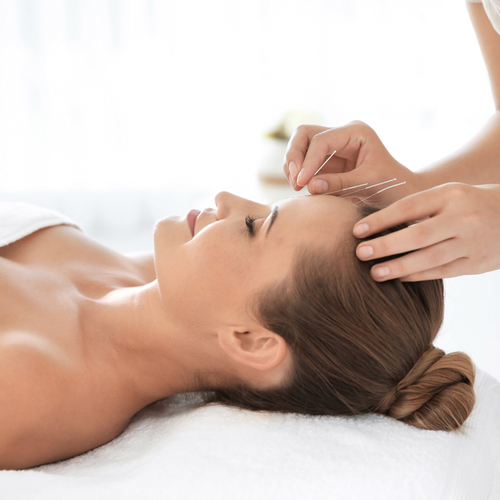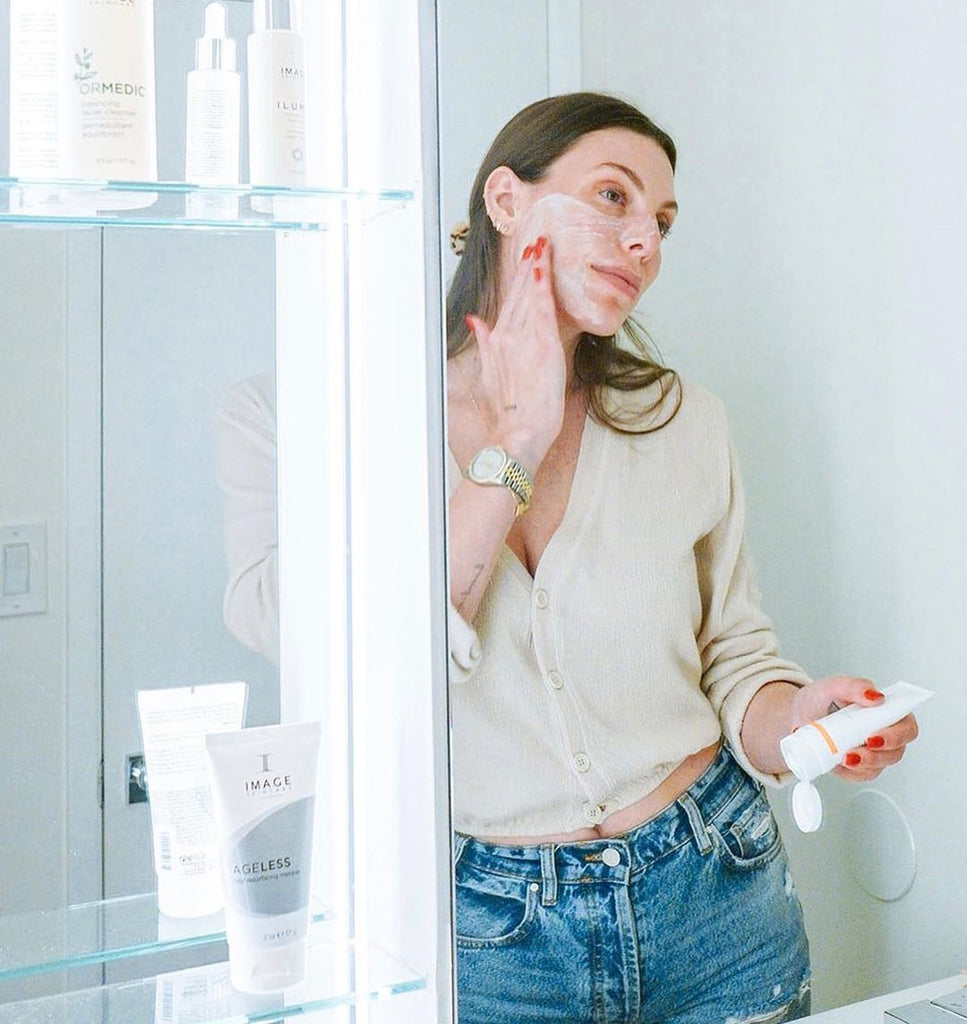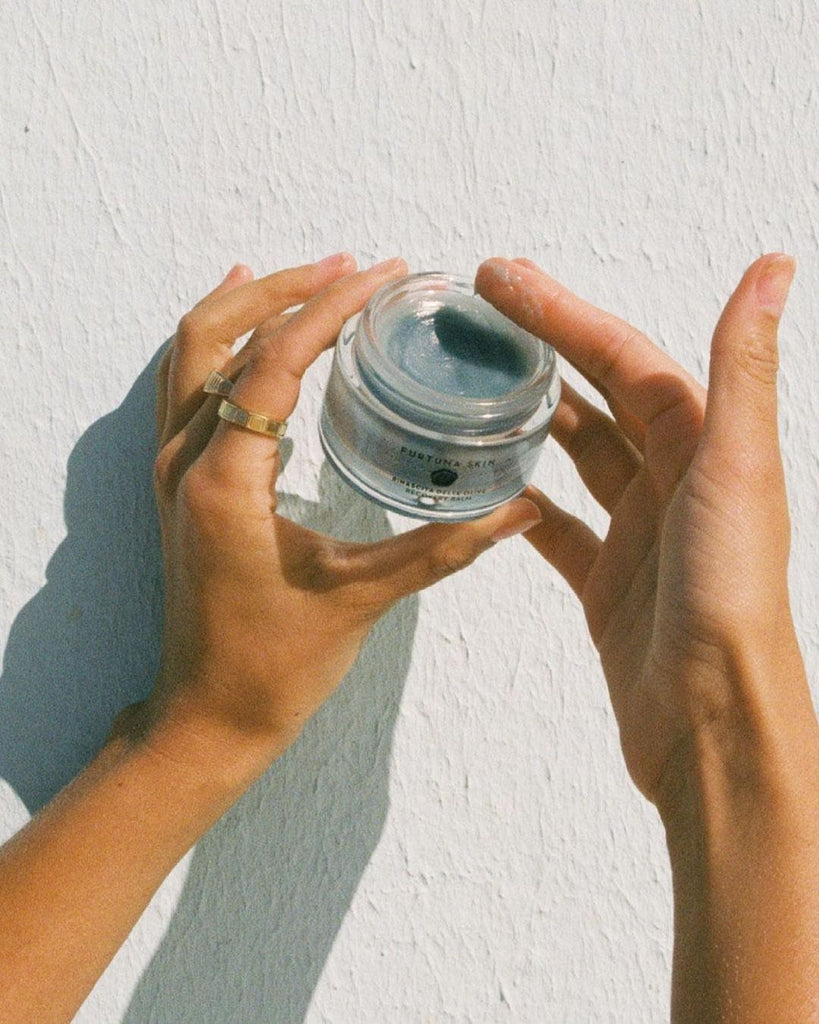Acupuncture is a form of traditional Chinese medicine where thin needles are lightly inserted into various pressure points of the body in order to relieve stress, soothe muscles and pain, and increase blood flow. It has been known to help create a therapeutic, relaxed state in the body, and can help with a number of ailments such as chronic pain, migraines, and even certain digestive issues. Acupuncture is often used to help release tension in the muscles and balance your qi, but in recent years the practice has risen in popularity as a more natural alternative to Botox, intended to smooth the skin and promote a taut and glowing complexion.
However, before investing in any new procedure or practice it’s important to know the in’s and out’s in order to determine if it will be worthwhile for you. We spoke with Dr. Marisa Garshick, MD, facialist Candace Marino, and esthetician Nicole Caroline to find out everything you need to know about acupuncture as an anti-aging tool, and this is what they had to say.

What is acupuncture and how does it work?
Much like microneedling, acupuncture works by lightly inserting dozens of thin needles into the skin at varying pressure points across the body to release stress and tension. “[Acupuncture] creates these microtraumas to the skin, which similar to microneedling, stimulates collagen production, though with acupuncture the number of needles typically ranges from 40-70, which is less than the amount of microtraumas produced with microneedling,” explains Garshick. When being used for anti-aging purposes the needles will be confined to the skin of your face, targeting existing fine lines and wrinkles, as well as areas where they may later develop.
Can it have anti-aging functions?
The idea that acupuncture can have anti-aging properties hinges around the thought that it can promote collagen production in the skin, enhancing elasticity for a smoother, more even complexion. “The concept of creating small micro-injuries to the skin, as is done with the acupuncture needle, is thought to promote collagen which can help improve the appearance of fine lines and wrinkles. By helping microcirculation, it can improve the overall appearance of complexion and puffiness of the skin,” says Garshick.
However, not all medical professionals are sold. In fact, Caroline notes that while acupuncture certainly has its benefits in soothing the body and the mind, from an esthetician’s perspective it is not a worthwhile treatment to undergo for anti-aging. “Advocates of acupuncture for wrinkle reduction claim the "micro-trauma” caused by the needle stimulates collagen and elastin, similar to the way a micro-needle, or a fibro-blast treatment would. The needles are not used close enough in my opinion for much of this to occur, and I do not believe this to be completely true. You are better off doing actual micro-needling, which exists for this exact reason, and have acupuncture done for any of the other numerous benefits it provides,” she says.
How often should you be getting acupuncture for treating wrinkles?
This is where it may become impractical to rely on acupuncture as your primary anti-aging treatment--it can take multiple treatments to begin to see results, and requires significantly more maintenance than Botox or even micro-needling. “This can vary based on your specific needs, but some protocols recommend 5-10 treatments 1-2 times per week followed by maintenance treatments every 4-8 weeks,” suggests Garshick. Similarly, Marino suggests 10 treatments over the span of 5 weeks, with a monthly “touch up” session.

Does it hurt?
While it may sound uncomfortable to have a series of needles inserted into your skin, the reality is that the process is largely painless. “When the needle is inserted you may feel a quick prick. Acupuncture needles used in the face are smaller than those used on the body and most people don’t feel them after their initial placement,” says Marino. However, if you have a tendency to hold stress in certain areas of your body or face, you may find those spots to be more uncomfortable during the initial insertion of the needle. “If there is tension in a specific muscle (especially around the jaw, I have found) the muscle may jump as it releases and then nothing else should really be felt,” says Caroline.
How long will it take to see results?
Results can vary from person to person, but you may notice some immediate brightening after your first session. However, more long term anti-aging results you may have to wait for. “While some benefits related to improved circulation may be noticed soon after the treatment, any potential collagen-boosting benefits can take time, even taking up to 6 months to fully take place,” says Garshick. If you want to track your progress, Marino suggests taking before and after pictures of your sessions to chart any changes in your appearance.

How long will the results last?
The idea behind getting acupuncture on your face is to promote collagen production, and this can create long lasting results. However, with this treatment in particular you will need to continue to book appointments over time in order to see the changes for good. “Once you build collagen, the results are long-lasting but maintenance treatments can be used to boost the results,” says Garshick. Caroline adds, “You need to go about twice a week, for anywhere between 8-10 sessions before seeing (minimal) results. I prefer at home Gua-Sha, or even at home pressure point massage for a similar effect, that can be done at any time.”
Are there any downsides?
As for any dangerous side effects of acupuncture, the only thing you should be aware of is the potential for bruising on the face. That being said, Garshick adds that facial acupuncture should not be the only anti-aging skincare treatment you use if you want to achieve the best results for your complexion. “Facial acupuncture does not replace other topical cream, injectables or procedures used to help improve the signs of aging. More research is needed to confirm the full range of benefits of acupuncture for the purpose of facial aging.” Marino also notes that if you struggle with uncontrollable migraines, seizures or hypertension, facial acupuncture is not recommended.
This article was originally published on shefinds.com.



